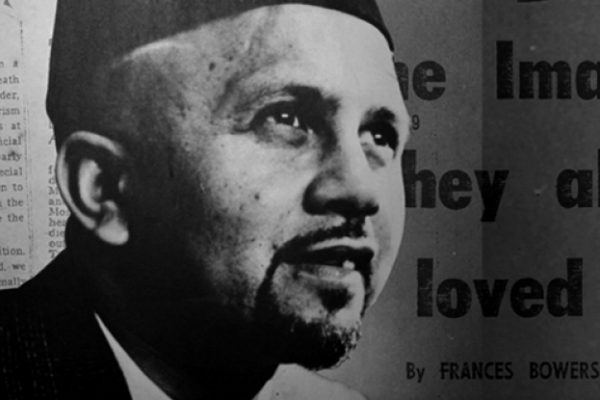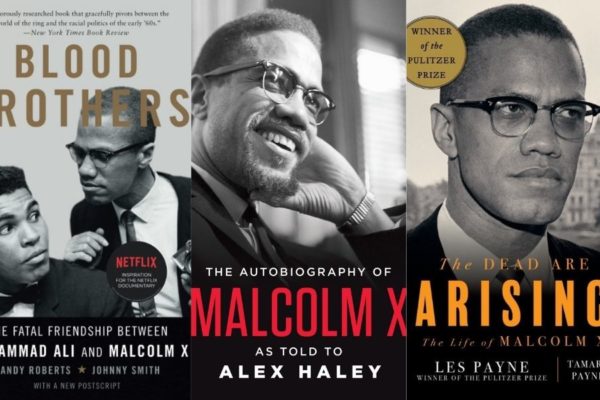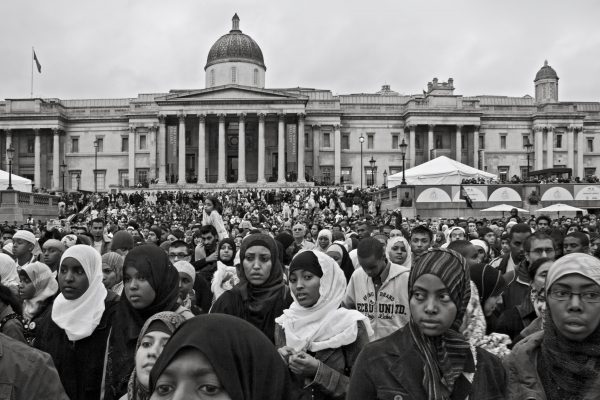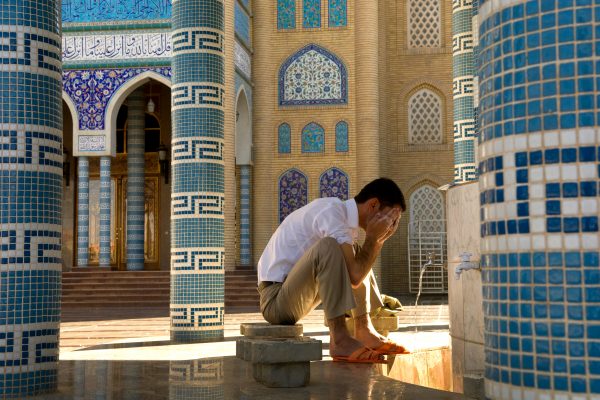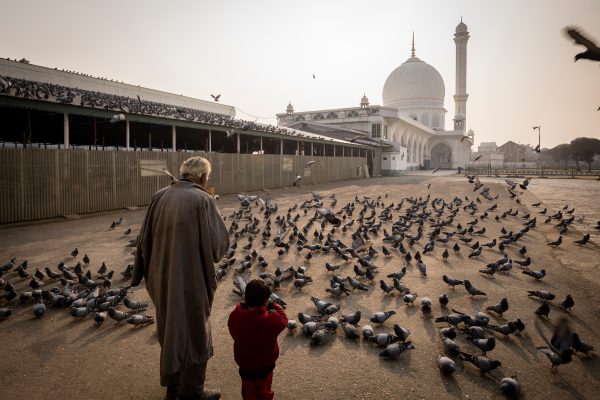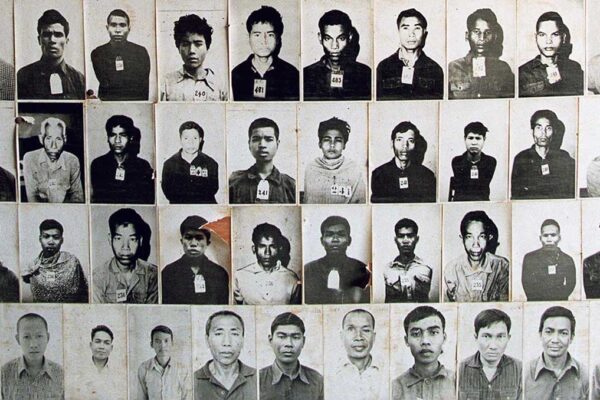For Prophet Muhammad, and for many change makers both before and after him, the starting point in dismantling this oppressive system that marginalized so many was recognizing that the intrinsic value in any individual is who they are spiritually.
For Prophet Muhammad, and for many change makers both before and after him, the starting point in dismantling this oppressive system that marginalized so many was recognizing that the intrinsic value in any individual is who they are spiritually.
I am humbled to say I was invited last week to deliver the Friday sermon at Columbia University at Low Plaza, the school’s main campus grounds. I took this as an opportunity to go deeper into my own faith tradition to study how a social hierarchy manifested itself in the past through the system of tribalism and examine some of the steps Prophet Muhammad (peace be upon him) took as an individual to dismantle this system by diminishing this notion of the “other.” I then drew parallels between that system of hierarchy and the structural racism of America by briefly exploring the deeply rooted history of housing discrimination that has particularly subjugated and isolated our African American communities, as detailed by Richard Rothstein in his book The Color of Law: A Forgotten History of How Our Government Segregated America. Given how housing discrimination is integral in perpetuating the larger system of racism, my final point is a reflection on how we as individuals, even with good intentions, can inadvertently become the agents that help expand this system and the oppression tied to it when we do “other” those who are different than us and fail to see the larger history at play. I have witnessed this first hand at a town hall our office convened in the affluent Central Park South area, where parts of the community voiced sentiments with strong racial undertones in response to a homeless shelter that is scheduled to open in their neighborhood.
A Social Hierarchy Through Tribalism and Dismantling Notions of the “Other”
In 7th century Arabia and largely in the pre-modern era, race and group membership were primarily defined by cultural traits, e.g. language, customs, lineage, forefathers. Given that most Arabs were dark in complexion, skin color was not relied on as heavily as a distinguishing trait, although it still played a role. Essentially there was no ‘I’ within the Arab culture at the time. Individuals had to survive in groups or units by relying upon their tribes and more specifically their clans. Thus, when any one person was attacked, it was not merely seen as an attack on an individual but an attack on their entire group. This is demonstrated in the term “’asabiyah”, referring to this sense of social solidarity that existed within tribes along with an exclusion of all outside groups. “’Asabiyah” is tied to the word “al-‘asabiy” (nerve), demonstrating that the connection to your tribe was in your blood and impacted how you instinctively behaved. “’Asabiyah” gave rise to the same racist thinking we see today where tribes felt superior to other groups as a result of their lineage, their customs, their forefathers etc. It is incredible to think how, in our culture today, I may speak the same language and share the same culture and customs as someone else but if my skin color is different, that is enough for a hierarchy to exist between us. We have become even more irrational and superficial in how we classify one another.
The Prophet Muhammad grew up in this society and was fully embedded within this system of tribes, thus his institutional knowledge and lived experience was essential in his understanding of who was being “othered” and how the system needed to be changed. When the prophethood was bestowed upon him at the age of 40, part of his mission was to establish equality for all by dismantling this divisive social hierarchy based on membership in a group and uniting people along universally shared values. For Prophet Muhammad, and for many change makers both before and after him, the starting point in dismantling this oppressive system that marginalized so many was recognizing that the intrinsic value in any individual is who they are spiritually. The condition of a person’s heart, the part of you that cannot wholly or truly be evaluated by others except God Himself, is what ultimately distinguishes you from others. Prophet Muhammad would say, “Piety is here! Piety is here! Piety is here!” and repeatedly point to his heart. Thus, he sought to encourage his community to treat people based on a lack of understanding that they would never know where people wholly ranked in comparison to others and advocated for an approach to society that focused on the intrinsic value each human had.
There are countless stories of Prophet Muhammad intentionally elevating people that otherwise had no social status and providing them with a much-needed platform that would ensure they were no longer neglected. He often focused on the poorest and weakest people in society; those individuals who tended to be non-Arab and/or had no tribal affiliations and thus could be easily “othered” by the community. Without any ties to a group, an individual could be treated in the harshest of manners because no repercussions would be felt by the oppressor. I highlight a handful of stories below, most importantly because I believe many Muslims, including myself, know that this faith denounces racism in all its forms but lacks the knowledge of how Muhammad and his people grappled with this social disease in light of their newly acquired principles.
1. Bilal ibn Rabah: A Black man tasked with maintaining the spiritual strength of the community
Many of us are familiar with the story of Bilal (May God be pleased with him), a Black man from Abyssinia who was initially brought to Makkah as a slave. After having been severely tortured for accepting Islam, he was eventually freed. This was a man who had no status in Arab society because of his lack of tribe identity, his previous status as a slave, and his relatively dark complexion.
When the Muslims had become more established in the city of Madinah, the Prophet Muhammad decided it was important to have a method by which people in the community could be notified of the time for prayer. Prophet Muhammad appointed Bilal, because of the beautiful voice he possessed, to serve as the ‘muezzin’, the individual who would conduct the call to prayer. The Prophet Muhammad utilized this opportunity as a teaching moment by gifting a Black man with the responsibility of ensuring the entire faith community, including the privileged and the poor, maintained its religious obligations. Bilal had a direct hand in preserving the religious and spiritual integrity of his people and thus could no longer be “othered” and ignored. As we sit in our mosques and Islamic Centers today, let us recognize that the people who give the call to prayer today are following in the tradition and footsteps of Bilal.
Granted, many of the Arab converts took time to shed away their pre-Islamic practices and thinking, and Bilal still received pushback from fellow Muslims for having been assigned this role. Some scholars say that the verse we so often hear recited today at various demonstrations and rallies that begins with “O mankind, indeed We have created you from male and female and made you peoples and tribes that you may know one another…” [49:13] was revealed because of the negative remarks made towards Bilal. After being given this initial platform by the Prophet Muhammad that society would never do, Bilal continued to play an integral role in the Muslim community and would later be appointed as the Head of the Treasury in Madinah.
2. Julaybib: Dark-skinned, physically deformed and deemed of the “family of Muhammad”
Julaybib (May God be pleased with him) was another companion of Prophet Muhammad. The name “Julaybib” can be translated as “small grown” and it essentially described Julaybib, a man who was both short but also physically deformed in his appearance. His complexion was dark and he had no tribal affiliations or family and thus held no status in society. The Prophet Muhammad was intentional about looking out for this man, frequently engaging in conversation with him and putting him on a pedestal. Given the way Julaybib was generally viewed and treated by others, he was convinced that he would never get married. In his continuous effort to uplift those who were neglected, the Prophet Muhammad went on behalf of Julaybib to the most prominent tribe in Madinah to ask for their daughter in marriage. The tribesman, thinking the Prophet himself wanted to marry his daughter, became ecstatic. Prophet Muhammad clarified that this was not for him, but for his friend Julaybib. The tribeswoman screamed in response and retorted, “Julaybib? Never!” and ironically swore to God to the believed Messenger of God that her daughter would never marry Julaybib. Hearing this entire conversation, the daughter came out and, trusting Prophet Muhammad’s judgment, insisted that she marry Julaybib.
Shortly after the two were married, a battle took place and the Muslims were called upon to fight. When the battle finished, Prophet Muhammad began looking around amongst the people in his community and asked, “Are you missing anyone?” His followers, many of whom would oftentimes fight alongside people of their tribes because they knew one another well, responded “no”. The Prophet Muhammad then responds, “But I am missing Julaybib. He is of my family”. Prophet Muhammad continued to look and finds Julaybib dead next to seven other deceased bodies of the opposing army. Deeply saddened by the loss of his friend and cognizant of his valiant efforts, Prophet Muhammad said: “Oh God, this man is from me and I am from him”. He then got onto the ground and began digging the grave of Julaybib. Upon finishing, Prophet Muhammad picked up Julaybib’s body with his own two hands, buried him and conducted the funeral services as well.
Individuals like Julaybib remind me of the unique intersectionality that exists today of individuals who are both differently abled and in the racial minority and thus all the more likely to be neglected by society. For Prophet Muhammad to be so conscious of a man who could seemingly offer nothing to his community in terms of his social status and his physical condition meant to define and cultivate this man’s capability based on his intrinsic value that was as potent as anyone else’s. Unlike with almost all other people of his time, the Prophet Muhammad declared Julaybib to be of his own family and held his body in his own two hands, ultimately destroying the notion that Julaybib is of the “other.”
3. Umm Ayman: A Black woman deemed by Muhammad as “the mother after my mother”
Umm Ayman (may God be pleased with her) was a black woman from Abyssinia who accompanied Prophet Muhammad and his mother when they were traveling together. At this time, Prophet Muhammad was six years old and in the midst of their journey, his mother passed away. Umm Ayman was charged with looking after and caring for Prophet Muhammad during his formative years and even after he grew up and had his own family, Umm Ayman continued to be of care and support to him.
Later on in his life, the Prophet Muhammad gave Umm Ayman the name “barakah” (blessing) and publicly said that “she is the mother after my mother.” I find it necessary to take a step back here to recognize that the Prophet Muhammad, a man whose teachings are followed by about 2 billion people, is fully recognizing that a Black woman with no societal ranking is his other mother. In the same way so many of my habits and practices come from actions I inherited from my parents, I would argue that there are parts of Prophet Muhammad’s character and his behavior that stem from the care and influence of Umm Ayman; actions and habits that have been disseminated for all of us to learn from and incorporate into our own lives. The legacy of Umm Ayman lives on within us and for us to no longer “other” individuals like her means to acknowledge her legacy within our own belief system.
4. ‘Ubadah ibn As-Saamit: A Black leader of an army who is supported through allyship
‘Ubadah ibn As-Saamit (may God be pleased with him), a Black man with relatively insignificant ties to any tribe, was amongst the first individuals of Madinah to accept Islam. He was later appointed by Prophet Muhammad to write down Revelation and served a major role in documenting the Qur’an that we read today.
‘Ubadah accompanied the Prophet in each of his battles, and in the years after Prophet Muhammad’s death, ‘Ubadah was assigned to lead an army to Egypt to lay siege to Babylon Fortress located in Coptic Cairo. Under attack, Muqawqis, the leader of Egypt called for a delegation from ‘Ubadah’s army. Expecting to see a light-skinned Arab, Muqawqis is visibly disturbed when approached by ‘Ubadah and his men. Muqawqis looks away from ‘Ubadah and says, “move this Black man away from me and send someone else to talk to me.” Before ‘Ubadah can speak, his front line of men responds, “This man is the best of us in knowledge and the best of us in wisdom. He is our leader who has been appointed for us. Blackness is not something bad amongst us.”
Muqawqis continues to push back and says, “How could you accept him to be the leader of you when he should be the lowest of you?” The men respond again, “he is the best of us, the foremost amongst us and the wisest of us.” Muqawqis reluctantly submits and says to ‘Ubadah, “speak to me, oh black man but speak gently because your darkness scares me.” Having experienced plenty of racism in the past already, ’Ubadah notifies Muqawqis of his other men, saying “listen; if you are afraid of me, I have left behind 1,000 men who are blacker than me who would scare you even more if they were brought here.”
Even as ‘Ubadah possesses a position of authority, his legitimacy as a human being is questioned and the key thing to note here is the deep conviction with which his community has accepted his leadership, specifically according to internal values he possesses. ‘Ubadah is no longer of the “other” but rather he has been fully incorporated into a community that not only acknowledges him enough to obey him, but that goes out of its way to ensure others view him the same way as well. It is not enough to put marginalized people in power to dismantle entire systems of oppression and become inclusive of the “other.” The change must also be a cultural one that takes place amongst the masses as well.
The Social Hierarchy of Today That “Others” Blacks
In developing a more nuanced understanding of my faith and how its principles should be applied to today’s circumstances, I am pushing myself to gain a deeper comprehension of present-day reality and the societal norms of discrimination that persist. It is no surprise how deeply rooted white supremacy and anti-blackness is within this country, and one aspect of this system of subjugation that I have begun to learn more about is the housing industry. Richard Rothstein’s The Color of Law: A forgotten History of How Our Government Segregated America argues how state-sanctioned policy unconstitutionally denied African Americans the means and rights to integration in middle-class neighborhoods and because this denial was state-sponsored, the nation is obligated to remedy it. The topic is comprised of multiple layers and I highlight a few points that stuck out to me below and ultimately how it ties into this larger idea of Blacks and minorities continuously being “othered”.
The government has long sought to isolate Blacks in this country by deeming them as inferior, essentially by labelling them as criminals, drug addicts, free loaders, or some other harm to society. These ideas manifest themselves into policy in unique ways. For example, in 1933 the Home Owners’ Loan Corporation (HOLC) was established to rescue households that were about to default by purchasing existing mortgages and reissuing them to homeowners with longer-term payment plans. This was largely in response to the impact of the Great Depression. To determine where mortgages should be issued, HOLC created a color-coded map of every metropolitan area in the nation with green indicating ‘safe’ areas and red indicating ‘risky’ areas. A neighborhood earned a red color if its residents were Black, regardless of that neighborhood’s socioeconomic standing or other factors. Thus, Black people were essentially prevented from purchasing homes outside of their neglected, often poorly serviced communities.
The Federal Housing Administration (FHA) and the Department of Veterans Affairs (VA) perpetuated these practices by refusing to issue mortgages for Blacks in designated white neighborhoods or to any whites who lease or rent their home to Blacks. A 1936 government manual explicitly stated that “deeds to properties for which government issued mortgage insurance should include explicit prohibition of resale to African Americans.” One story details a developer which was refused an FHA loan to construct a neighborhood because of its proximity to a Black neighborhood. Only after the developer built a half-mile concrete wall that was six-foot-high and a foot thick to separate the neighborhoods was it granted the federally-funded loans.
Community Associations also became popular in the 1940s and 1950s. Any individual that wanted to move into a white neighborhood had to agree to a racial covenant of the CA that banned any future sale or renting to Blacks. Judges believed that although this practice was illegal on a governmental level, these racial covenants were acceptable because they were part of a private agreement. Thus, the government enforced such discriminatory rules and forcefully evicted families who broke the covenant by selling or renting to Blacks.
What became the effect? Many Black developments did not receive FHA/VA financing and thus were of poorer quality. Folks who lived in these areas were too poor to buy the homes they resided in and would often rent for a period of time and then leave, leading to little long-term investment by any one community of people. Additionally, Blacks who could afford to buy a home without any federal financial support would have to do so on installment plans with monthly payments. There was no equity and ownership would transfer only after 15–20 years of payments. If one payment was missed, the family could be evicted immediately. Blacks who did purchase homes would be taxed at much higher rates than their white neighbors without any knowledge of the disparity, resulting in overcrowding in Black dwellings to meet these costs and a higher likelihood to miss a payment.
The 1968 Fair Housing Act officially banned any form of housing discrimination, defined as the “refusal to sell or rent a dwelling to any person because of his race, color, religion, or national origin.” But by this time, it was too late as Blacks could not afford the homes they wanted to buy. The government-funded financial support white families received to purchase homes in the prior decades helped them to acquire more wealth and stability and over time, their properties appreciated. With African Americans possessing significantly lower amounts of wealth and inter-generational wealth because of high costs and minimal access to resources, the homes they would have hoped to purchase previously were now too expensive.
Segregation played a huge role both in private housing developments and public housing as well. A 1984 investigation by the Dallas Morning News found that the nation’s nearly ten million public housing tenants were almost entirely segregated by race and every predominantly white-occupied project had facilities and amenities far superior to predominantly black-occupied projects.
The segregation is still felt today as developers of low-income housing use federal tax credits primarily to construct apartments in already-segregated neighborhoods because those developers are often unable to attain the public and political support needed to develop in more affluent areas. Additionally, most vouchers used to subsidize a family’s rental payments are usually only accepted in segregated and lower-income communities that are further away from areas of economic growth and opportunity.
A brief overview of the above policies demonstrates how government activity contributes to the overall white supremacist ideology that perpetually “others” Blacks and confines them to specific geographical, economic and societal realms. It largely resembles the tribalistic societies of the past where individuals who did not have ties to a group were permanently deemed inferior without any pathway to attain legitimacy in the community. As these general divisions based on race and customs become more deeply rooted within a society, the nuance and complexity of the lived experience of these minority groups become more easily overlooked and ignored.
How We Perpetuate Systemic Racism by Not Knowing the “Other”
The Color of Law has provided me with some incredible insights as to how cities like New York have become segregated in the ways that they are as well as how communities are now capable of maintaining this segregation on their own by resisting any form of integration. This became apparent at a town hall I recently assisted in coordinating in response to the opening of a new homeless shelter.
Some brief background: As many of us know, the homeless population in New York City has increased dramatically over the past few years with some studies reporting almost 60,000 individuals living without a home. To meet the immediate needs of the homeless population, the Department of Homeless Services has been converting numerous hotels into homeless shelters and aims to open 90 new shelters around the city.
On 1/15/18, the De Blasio administration announced that it would be converting the Park Savoy Hotel located on 158 West 58th St into a “rapid re-housing job ready transitional housing facility.” This facility would house 150 working or job-ready men. There was an immediate uproar from the surrounding community with most folks opposing such a shelter opening in their neighborhood.
I work for the Manhattan Borough President’s office and our staff became inundated with phone calls and messages from individuals in the area who voiced their anger and concern over the city suddenly choosing to announce a homeless shelter without their approval. Although the city does not require public approval to open a homeless shelter, they often notify these communities within 2–3 months of the opening of the shelter and some would argue that is not enough time.
To effectively hear the various viewpoints of our constituents, our office partnered with DHS, the social service provider of this soon-to-be shelter and other elected officials in hosting a community town hall where members of the public could voice their opinions. The town hall was attended by well over 300 people, the majority of whom strongly opposed this shelter. It is important to recognize that the residents of this area of Manhattan are relatively affluent than most other parts of the city and are predominantly white.
I believe there were some legitimate concerns about general safety that were raised, but I would have never thought there would be such heavily racialized comments made regarding this shelter. It quickly felt like the entire population of individuals scheduled to move into this shelter was being largely viewed as a group of Black and Brown criminals that had no ability to contribute to the community they would become a part of. Especially after having read The Color of Law, I understand a bit better how our segregated communities can remain so easily separated even when a number of major laws have changed. All it requires is us as humans to continue to buy into generalizations and emotions about the “other” by failing to see, as individuals like the Prophet Muhammad did, the intrinsic value that every human being possesses.
Some of the comments from this town hall are listed below:
The homeless people who will live in this shelter will walk around in the neighborhood and their self-esteem will drop when they see such high prices for food and groceries that they could not afford.
Folks saw these individuals experiencing homelessness as weak and vulnerable. In some cases they may indeed be going through a lot, but to then argue that they would not be capable of living in such a “neighborhood” is to generalize all homeless individuals as permanently helpless, mentally fragile and unable to integrate into any community outside of the perceived low-income, segregated areas they supposedly come from. It also demonstrates how the social hierarchy of race comes into play as a more affluent white individual feels confident enough to say what they believe is best for a population that they may have little or no connection to. Factors like one’s socioeconomic status, their “criminal” record, and race unfortunately easily cloud our ability to recognize our shared intrinsic value with others.
We live right next door and I have three daughters. This is not going to be safe for my family. As you can see, within a ½ mile of this shelter, nearly 10% of the population is under the age of 19.
There is such a heavy saturation of homeless shelters in areas like the Bronx and Brooklyn and this point really made me question where these folks thought homeless shelters generally existed. To house folks experiencing homelessness, many of whom are Black and Brown individuals, in this imaginary location where families and communities do not exist is to perpetuate a kind of segregation where those who are largely neglected continue to remain neglected. It fails to acknowledge the complexity of these people, many of whom have families and children of their own that require their support. But are these narratives known?
These people don’t have neighborhoods or families, so why put them here? There is no need for this specific location.
The reality is that many of these individuals do have families in the city, especially in the outer boroughs. But to imagine that these people have families and communities that they have come from is to potentially overly humanize a population that many of the folks from this Central Park South community are, consciously or unconsciously, seeking to “other.” It also begs the question as to where this individual believes these people do “belong” and whether that area is supposed to be a low-income area of minorities.
Homeless people are often loitering in Central Park and this shelter will contribute to that problem.
Enjoying a park and loitering in a park ultimately depends unfortunately on your skin color, with Blacks being disproportionately targeted and criminalized by such views.
There will be a reduction in property values.
To date, not a single study has been published that explicitly proves that the presence of a homeless shelter decreases the value of the surrounding properties. In fact, this statement draws such a deep and frightening parallel to comments made by white communities in the 40s and 50s who believed their property values would drop because of Blacks moving into their neighborhood. Ironically, property values often increased when Blacks moved into a predominantly white neighborhood because of how much more Blacks were willing to pay above market rate for these homes. Their access was already limited, and they were willing to invest significantly in whatever opportunities they received.
“he location is too expensive and a burden on taxpayer dollars. It would be best to choose a less expensive site that is more affordable.
This statement ultimately ties into how systemic racism continues to be perpetuated today, particularly in ways that we are unaware. As Black communities continued to be segregated, isolated and neglected throughout the 20th century, the services and city facilities they received were often abysmal compared to their white counterparts and we very much still see this today when we contrast predominantly black neighborhoods with predominantly white neighborhoods. When we fail to recognize that our belief of bringing in poorer individuals (most often people of color) into wealthy areas will be costly and inefficient, we are failing to see how many of those individuals have been deprived of the resources and services available in these relatively wealthier areas their entire lives and thus have had no choice but to experience a life of poverty and societal neglect.
Wrap Up
In understanding how communities have been “othered” through arbitrary systems of social hierarchy, whether it is based on culture and customs or one’s skin color, I have to ask myself how much I have become socialized both to buy into generalizations regarding those groups I am not affiliated with and to maintain a distance from those very people. It can be simple for me to dissect a handful of comments made at a town hall that highlights a significant gap in how well communities of different racial and socioeconomic backgrounds know one another, but I can very well be perpetuating other forms of discrimination and segregation by accepting the current circumstances around me as the appropriate norm. These folks of the Central Park South community, many of whom I imagine are good people at heart who still want to help the homeless population, along with people like myself are not connecting the dots of how our current reality is the product of discriminatory policies and racist beliefs that we now perpetuate because we only see the system as it is today. The Prophet Muhammad and individuals like him could not be directional about how to dismantle biased systems without possessing a historical knowledge of their construction and perpetuation. I am compelled to think about the Muslim communities I am a part of today. Are many of them meant to be predominantly Arab or South Asian simply because there are more of us or is there a larger issue at hand that plays into a social hierarchy that neglects that Black and Brown (specifically Latinx) people and other minorities that also comprise a significant portion of this faith base?
This town hall made me reflect on the reality that even if, on an institutional level, individuals experiencing homelessness are placed in these affluent areas, the cultural beliefs surrounding this group of people will likely persist. This is where people like us have to make a conscious effort on an individual level to change the culture of our communities so that the “other” is no longer deemed as the “other” and thus is not as susceptible to false beliefs and negative or apathetic attitudes. It is in the same way the Prophet Muhammad invested in very specific personal relationships with those who would otherwise be deemed the least of value or stature in society in order to demonstrate to his people that their intrinsic value cannot be assessed through human-made social constructs that appraise souls. I do not need to be a leader within a community in order to initiate this cultural change because it does start through the circle of friends I possess and a critical discussion and inclusion of peoples we are out of touch with. It also requires a constant acquiring of more knowledge to understand how these overarching systems have been established and maintained.
There is much for me to learn on how systemic racism continues to function today and I find it important to continue to educate myself both on lessons of the past as well as realities of the present in order to effectively understand how my faith-based values can be implemented and practiced.
Sources
1) Imam Omar Suleiman (Yaqeen Institute for Islamic Research)
2) Dr. Sherman Jackson (USC: American Learning Institute for Muslims [ALIM])
3) Richard Rothstein, The Color of Law: A Forgotten History of How Our Government Segregated America



